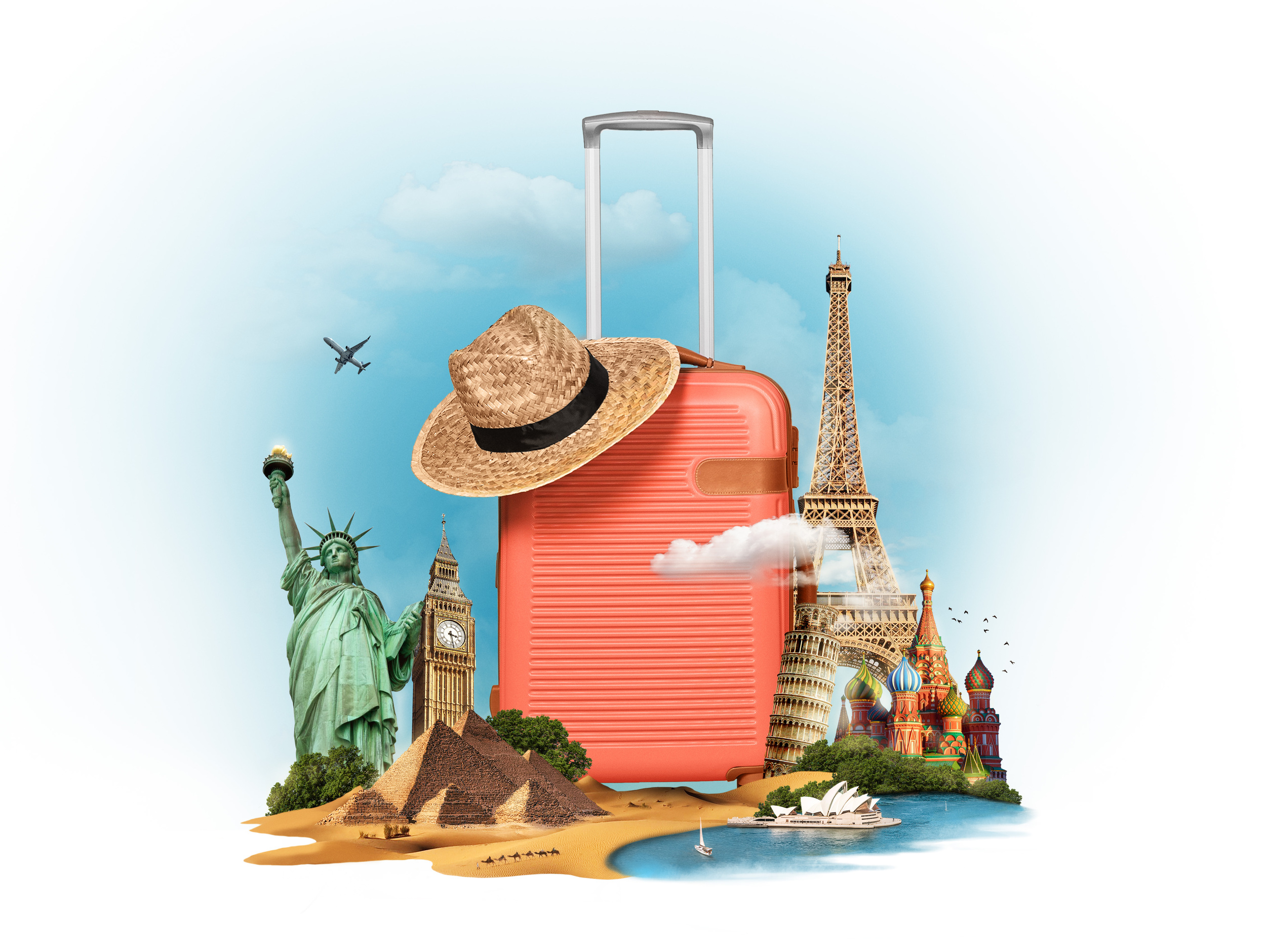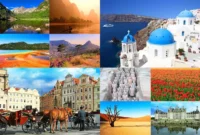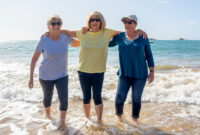Senior Women Travel: Embarking on a journey later in life offers unique opportunities for self-discovery and adventure. This guide delves into the exciting world of travel specifically tailored for senior women, exploring popular destinations, preferred travel styles, essential safety precautions, and practical tips for planning a memorable and fulfilling trip. Whether you dream of relaxing on a pristine beach, immersing yourself in a vibrant culture, or embarking on an adventurous expedition, this resource will empower you to plan the perfect getaway.
We’ll cover everything from choosing the ideal destination and travel style to budgeting effectively, ensuring safety, and utilizing helpful technology. Learn how to navigate the complexities of international travel, manage potential health concerns, and find accessible accommodations that cater to your needs. We’ll also share expert tips for packing light, securing your finances, and maximizing your enjoyment throughout your journey.
Destinations Popular Among Senior Women Travelers
Choosing the perfect travel destination is a deeply personal experience, and for senior women, the ideal trip often balances relaxation, cultural enrichment, and a sense of safety and security. Many factors influence these choices, including climate preferences, desired activities, and the level of independence desired. This section explores destinations catering specifically to the needs and interests of this demographic.
Popular Destinations for Senior Women Travelers
The following table outlines ten popular destinations, highlighting their appeal to senior women travelers:
| Destination | Climate | Activities | Safety Considerations |
|---|---|---|---|
| Portugal | Mild, sunny climate, particularly in the Algarve region. | Exploring historic cities like Lisbon and Porto, relaxing on beaches, enjoying delicious cuisine, taking day trips to charming towns. | Generally safe, but standard precautions against petty theft should be taken. |
| Italy | Mediterranean climate, varying regionally. Generally warm and sunny in the summer months. | Exploring ancient ruins, visiting art museums, enjoying delicious food and wine, taking cooking classes. | Generally safe, particularly in well-populated tourist areas. Be aware of pickpockets in crowded places. |
| France | Temperate climate, varying regionally. Summer months are generally warm and sunny. | Exploring Paris, visiting charming villages, enjoying wine tasting in the countryside, visiting art museums and historical sites. | Generally safe, but be mindful of pickpockets, especially in major cities. |
| Spain | Mediterranean climate, with hot summers and mild winters. | Exploring cities like Barcelona and Seville, relaxing on beaches, enjoying tapas and flamenco, visiting historical sites. | Generally safe, but standard precautions against petty theft should be taken. |
| Greece | Mediterranean climate, with hot, dry summers and mild winters. | Exploring ancient ruins, visiting islands, relaxing on beaches, enjoying Greek cuisine. | Generally safe, but be aware of pickpockets in crowded areas. |
| Canada (British Columbia) | Temperate climate, with mild summers and relatively mild winters along the coast. | Exploring stunning natural landscapes, hiking, whale watching, visiting charming towns. | Generally safe, with low crime rates. |
| New Zealand | Temperate climate, varying regionally. Summers are warm and sunny, winters are mild in many areas. | Exploring stunning natural landscapes, hiking, taking scenic drives, visiting vineyards. | Generally safe, with low crime rates. |
| Australia (Queensland) | Subtropical climate, with warm summers and mild winters. | Relaxing on beaches, exploring the Great Barrier Reef, visiting wildlife parks, exploring cities like Brisbane. | Generally safe, but be aware of potential hazards like sunstroke and dangerous marine life. |
| Costa Rica | Tropical climate, with warm temperatures year-round. | Exploring rainforests, observing wildlife, relaxing on beaches, zip-lining. | Generally safe, but be aware of potential risks associated with tropical environments. |
| Japan | Temperate climate, with four distinct seasons. | Exploring ancient temples and gardens, visiting bustling cities, experiencing traditional Japanese culture, enjoying delicious cuisine. | Extremely safe, with low crime rates. |
Lesser-Known Destinations for Senior Women Travelers
Beyond the well-trodden paths, several lesser-known destinations offer unique experiences and accessibility for senior women travelers. These locations often provide a more tranquil and less crowded experience.
Five such destinations include:
- San Miguel de Allende, Mexico: A charming colonial city with a vibrant arts scene, known for its stunning architecture, art galleries, and relaxed atmosphere. Accessibility is generally good, with many walkable areas and readily available transportation.
- Cusco, Peru: While Machu Picchu is popular, Cusco itself offers a rich cultural experience with accessible Inca ruins and a slower pace of life than other major tourist hubs. Note that high altitude may be a consideration.
- The Azores, Portugal: A volcanic archipelago offering stunning natural beauty, hiking trails (with varying difficulty levels), and opportunities for whale watching. Accessibility varies by island, so research is key.
- Slovenia: A hidden gem in Europe, boasting stunning landscapes, charming towns, and thermal spas. It’s generally easy to navigate and offers a relaxed pace.
- Alsace, France: This picturesque region offers charming villages, wine routes, and delicious cuisine. The region is generally flat and easy to navigate, with good public transportation.
Travel Preferences: Solo vs. Group Travel for Senior Women
Senior women traveling solo often prioritize destinations with robust infrastructure, clear safety measures, and easy access to communication and support services. They may choose destinations with a slower pace of life and readily available accommodations catering to individual travelers. Conversely, senior women traveling in groups often prioritize destinations offering opportunities for shared experiences and camaraderie, potentially opting for organized tours and group activities. Safety in numbers is also a significant factor for group travel. While solo travelers may relish independence, group travelers often value the convenience and shared responsibility of travel planning and logistical concerns.
Budgeting and Financial Planning
Planning your finances is crucial for a stress-free and enjoyable trip. A well-structured budget ensures you can fully immerse yourself in the experience without worrying about unexpected costs. This section will guide you through creating a sample budget, saving money, and managing your finances securely while traveling in Europe.
Sample Two-Week European Trip Budget for a Solo Senior Traveler
This budget provides a realistic estimate for a two-week solo trip to Europe for a senior traveler. Remember, prices can vary depending on the specific destinations, travel style, and time of year. This example focuses on a moderate level of comfort.
| Expense Category | Estimated Cost (USD) |
|---|---|
| Round-trip Flights | $1200 – $1800 |
| Accommodation (Hotels/Airbnb – mix of budget and mid-range) | $1400 – $2100 |
| Activities (Museums, tours, etc.) | $500 – $800 |
| Food (Mix of restaurants and grocery shopping) | $700 – $1050 |
| Transportation (Local transport, trains) | $300 – $500 |
| Miscellaneous (Souvenirs, incidentals) | $200 – $300 |
| Total Estimated Cost | $4300 – $6550 |
Methods for Saving Money on Travel Expenses
Several strategies can significantly reduce travel costs. Senior citizens often qualify for discounts, and traveling during the off-season can dramatically lower prices.
- Senior Discounts: Many airlines, hotels, and attractions offer discounts to senior travelers (typically age 65+). Always inquire about senior rates when booking.
- Off-Season Travel: Traveling during the shoulder seasons (spring and fall) or the off-season (winter, excluding peak holiday periods) often results in lower airfare and accommodation costs. Fewer crowds are an added bonus.
- Utilize Travel Rewards Programs: Accumulate points through credit card spending and redeem them for flights or hotel stays. Many programs offer bonus points for senior travelers.
- Pack Light: Avoid checked baggage fees by packing efficiently. This also makes navigating airports and transportation much easier.
- Consider Alternative Accommodation: Explore options like guesthouses, hostels (for social interaction), or homestays instead of hotels for potentially lower costs.
Managing Finances Securely While Traveling
Protecting your finances while traveling is paramount. Using secure payment methods and being aware of common scams can prevent significant financial losses.
- Travel-Friendly Credit Cards: Use credit cards with no foreign transaction fees and travel insurance benefits. Notify your bank of your travel dates to avoid having your card blocked.
- ATM Withdrawals: Use ATMs located in well-lit, public areas during the day. Be aware of your surroundings and avoid using ATMs that look suspicious.
- Protect Your Personal Information: Be cautious about sharing your credit card information online and avoid using unsecured Wi-Fi networks for financial transactions.
- Carry Limited Cash: Only carry the amount of cash you need for daily expenses. Keep the rest of your money secure in your hotel safe or a money belt.
- Beware of Scams: Be wary of unsolicited offers or individuals who try to distract you to steal your belongings or money. Common scams include fake ticket sellers, overly friendly strangers, and rigged games.
Technological Tools and Resources
Technology plays an increasingly vital role in modern travel, offering senior women travelers a wealth of tools to enhance their journeys, boosting both safety and convenience. From navigation and communication to planning and budgeting, digital resources can transform the travel experience, making it more accessible and enjoyable.
Helpful Mobile Applications for Senior Women Travelers
Smartphones offer a range of applications specifically designed to simplify and improve the travel experience. The following table highlights five particularly useful apps.
| App Name | Function | Benefits | Download Link |
|---|---|---|---|
| Google Maps | Navigation, location sharing, street view | Easy navigation, finding points of interest, sharing your location with loved ones for safety, visual exploration of destinations before arrival. | [Placeholder Link] |
| Messaging, voice and video calls, group chats | Staying connected with family and friends, easy communication across borders, sharing photos and updates. | [Placeholder Link] | |
| TripIt | Itinerary management, flight and hotel tracking | Centralized itinerary storage, automated itinerary creation from email confirmations, real-time updates on flights and bookings. | [Placeholder Link] |
| Currency Converter | Real-time currency exchange rates | Avoids confusion and ensures accurate budgeting, allows for quick calculations while shopping or dining. Many free apps are available. | [Placeholder Link] |
| Safety Siren | Emergency contact notification, location sharing | Provides a quick and easy way to alert pre-selected contacts in case of an emergency, including precise location information. Many similar apps are available with varied features. | [Placeholder Link] |
Technology Enhancing Safety and Convenience
Technology significantly enhances safety and convenience for senior women travelers. GPS tracking within apps like Google Maps allows for easy navigation and the ability to share your location with family or friends, providing peace of mind. Secure mobile payment systems minimize the need to carry large amounts of cash, reducing the risk of theft. Video calling apps allow for easy communication with loved ones, combating feelings of loneliness or isolation while traveling. Moreover, access to online travel reviews and forums provides valuable insights into potential safety concerns or accessibility issues at destinations. Using a translation app can improve communication in foreign countries, avoiding misunderstandings and potential problems.
Creating a Simple Travel Itinerary Using a Digital Calendar
Many digital calendars and planning tools, such as Google Calendar or similar applications, offer a user-friendly interface for creating detailed travel itineraries. For example, you can create a new calendar specifically for your trip. Then, input all your planned activities, including flights, hotel bookings, tours, and appointments. Color-coding different types of activities can help you visualize your schedule. Setting reminders for flights, check-outs, and appointments will ensure you stay on track and avoid missed connections. You can even add notes with important details, such as restaurant reservations or contact information for tour guides. Sharing this calendar with a family member or friend provides them with an overview of your trip and allows them to stay informed about your whereabouts. This level of organization reduces stress and enhances the overall travel experience.
Final Review
Ultimately, senior women’s travel is about embracing new experiences, creating lasting memories, and enriching your life. By carefully planning your trip, prioritizing your health and safety, and utilizing the resources available, you can embark on a truly rewarding adventure. Remember to tailor your journey to your personal preferences, embrace flexibility, and most importantly, enjoy the journey. The world awaits, and your perfect trip is within reach.




